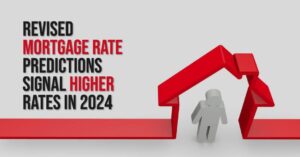Are Home Prices Overvalued? The housing market is in a state of flux, leaving experts divided on whether home prices are overvalued or a reasonable reflection of demand. The opinions on this issue are varied, and it's critical to understand the dynamics at play to make informed decisions.
Realtor.com® Chief Economist Danielle Hale emphasizes that the percentage of income allocated toward housing payments is nearing all-time highs. This raises concerns about the sustainability of current home prices.
Regional Disparities in Overvaluation
An August analysis by Florida Atlantic University and Florida International University researchers revealed that homes in 98 of the 100 largest housing markets are selling above their long-term prices, indicating potential overvaluation.
Ken H. Johnson, a real estate economist at Florida Atlantic University, highlighted that the Sun Belt states, particularly Florida, are experiencing the highest overvaluation.
Impact of the Housing Shortage
The housing shortage plays a significant role in driving up prices. With limited housing inventory, buyers engage in fierce bidding wars, elevating property values. Devyn Bachman, Senior VP of Research at John Burns Research and Consulting, argues that the demand outweighs concerns of overvaluation due to this shortage.
Mortgage Rates and Price Dynamics
Mortgage rates and incomes are pivotal factors influencing perceived overvaluation. Rising interest rates could potentially lead to a decrease in home prices, making current valuations appear inflated. Conversely, a rate drop might stimulate market demand and result in price hikes.
The Unpredictability of Market Peaks
Predicting the market peak is challenging, and concerns loom about buying at the wrong time. Ali Wolf, Chief Economist of Zonda, acknowledges the fear of buying at the peak but emphasizes the importance of considering long-term factors and objectives.
Future Outlook and Resilience of the Market
While acknowledging the possibility of price adjustments, experts generally don't foresee a housing crash akin to the Great Recession. The current market conditions, including demand exceeding supply, and tighter lending practices, are expected to cushion the market from a drastic downturn.
Despite the debates surrounding overvaluation, the decision to buy a home ultimately depends on personal circumstances, long-term goals, and financial readiness. Seeking advice from real estate professionals can provide valuable insights to guide this decision.
Thus, The debate over whether the housing market is overvalued underscores the complexity of the real estate landscape. Whether it's a bubble or a reflection of demand, it is advisable that individuals in need of a home should carefully weigh their options and make informed choices for their future.











